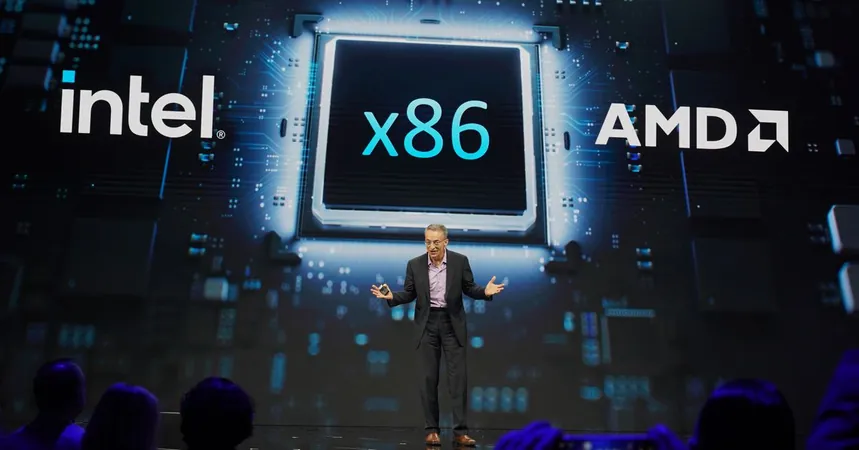
AMD and Intel Unite Against ARM: A New Era for Chip Manufacturing?
2024-10-15
Author: Jessica Wong
AMD and Intel Form x86 Advisory Group
In a surprising twist of fate, rival tech giants AMD and Intel have set aside their differences to form an x86 Advisory Group, targeting the meteoric rise of ARM chips. This novel partnership underscores the increasing threat posed by ARM architecture, which has begun to encroach on x86's longstanding dominance in the chip-making arena.
Member Companies
The newly formed alliance boasts an impressive roster of members, including tech heavyweights such as Microsoft, Google, and Meta. The group was announced during Lenovo’s Tech World 2024 conference in Bellevue, Washington, where speakers including AMD's CEO Lisa Su and Intel's CEO Pat Gelsinger emphasized the vitality of the x86 platform. Gelsinger notably declared that x86 architecture remains "alive and well," a statement that aims to reassure stakeholders amid growing competition.
Goals of the Advisory Group
The primary aim of this advisory group is to enhance compatibility, predictability, and consistency within x86 product offerings. This initiative will seek feedback from both hardware and software developers within the x86 ecosystem and strive for simplified architectural guidelines to standardize interfaces across the product lines of both AMD and Intel.
Pressure from ARM
While these objectives sound commendable, the formation of this group largely reflects the rising pressure these chipmakers face from ARM. The impact of ARM-based processors is undeniable: Apple’s shift from Intel chips to its own ARM-based architecture has set a precedent, and Qualcomm is finally breaking through with powerful ARM chips for Windows devices after years of challenges.
A Sense of Urgency
AMD and Intel’s collaboration may be driven by a sense of urgency; as ARM’s popularity continues to swell, both companies realize that they must innovate and create a formidable front to maintain their market position. With Qualcomm aggressively advancing its ARM technology, the stakes have never been higher.
Conclusion
This strategic alliance not only represents a significant moment for AMD and Intel but also sets the stage for potential shifts in the competitive landscape of chip manufacturing. The age-old rivalry may evolve into a united front against a formidable common adversary—ARM. Will this collaboration be enough to combat ARM's growing influence, or is it simply a stopgap measure in an inevitable shift? Only time will tell!

 Brasil (PT)
Brasil (PT)
 Canada (EN)
Canada (EN)
 Chile (ES)
Chile (ES)
 España (ES)
España (ES)
 France (FR)
France (FR)
 Hong Kong (EN)
Hong Kong (EN)
 Italia (IT)
Italia (IT)
 日本 (JA)
日本 (JA)
 Magyarország (HU)
Magyarország (HU)
 Norge (NO)
Norge (NO)
 Polska (PL)
Polska (PL)
 Schweiz (DE)
Schweiz (DE)
 Singapore (EN)
Singapore (EN)
 Sverige (SV)
Sverige (SV)
 Suomi (FI)
Suomi (FI)
 Türkiye (TR)
Türkiye (TR)